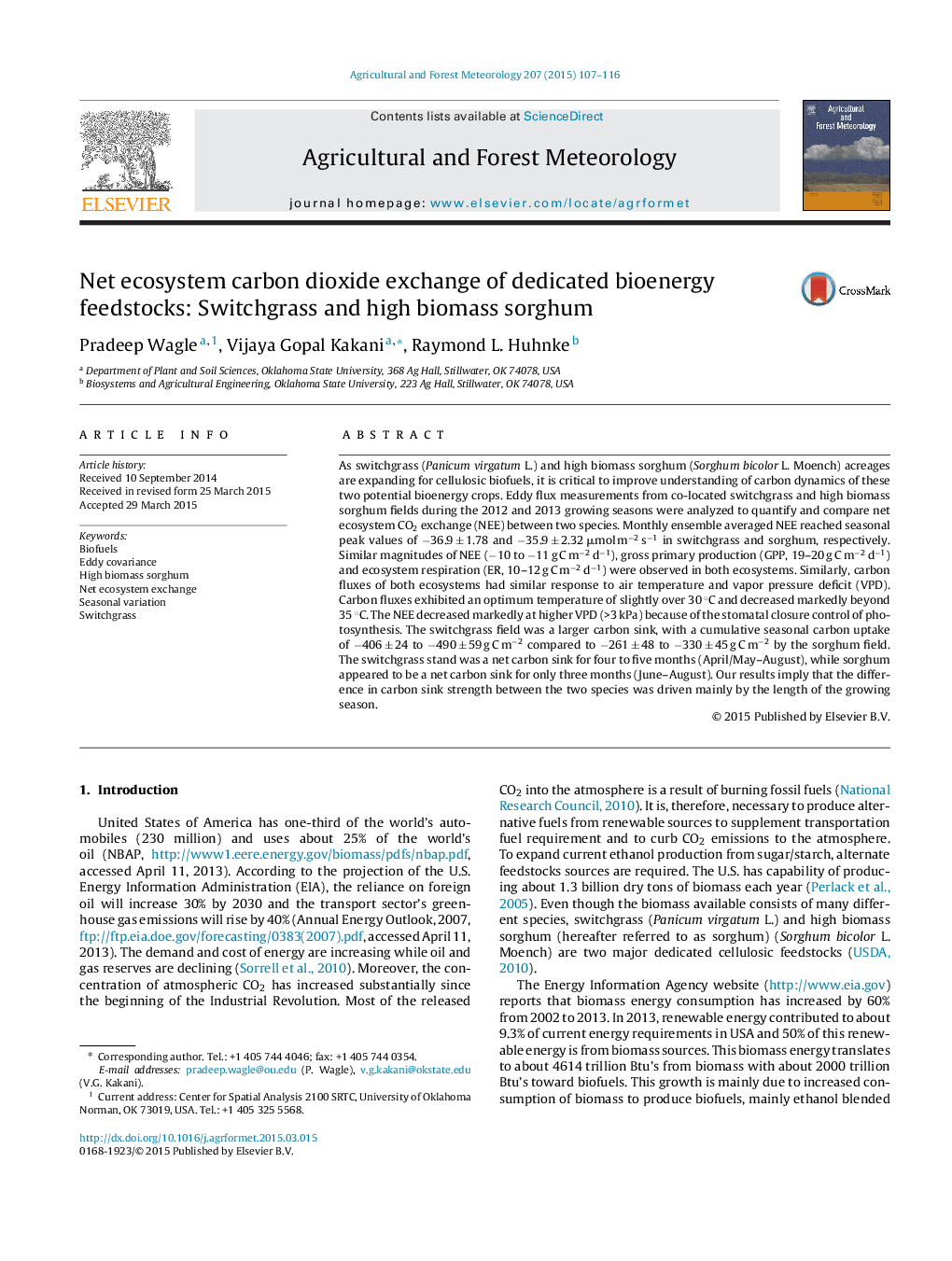| Article ID | Journal | Published Year | Pages | File Type |
|---|---|---|---|---|
| 6537306 | Agricultural and Forest Meteorology | 2015 | 10 Pages |
Abstract
As switchgrass (Panicum virgatum L.) and high biomass sorghum (Sorghum bicolor L. Moench) acreages are expanding for cellulosic biofuels, it is critical to improve understanding of carbon dynamics of these two potential bioenergy crops. Eddy flux measurements from co-located switchgrass and high biomass sorghum fields during the 2012 and 2013 growing seasons were analyzed to quantify and compare net ecosystem CO2 exchange (NEE) between two species. Monthly ensemble averaged NEE reached seasonal peak values of â36.9 ± 1.78 and â35.9 ± 2.32 μmol mâ2 sâ1 in switchgrass and sorghum, respectively. Similar magnitudes of NEE (â10 to â11 g C mâ2 dâ1), gross primary production (GPP, 19-20 g C mâ2 dâ1) and ecosystem respiration (ER, 10-12 g C mâ2 dâ1) were observed in both ecosystems. Similarly, carbon fluxes of both ecosystems had similar response to air temperature and vapor pressure deficit (VPD). Carbon fluxes exhibited an optimum temperature of slightly over 30 °C and decreased markedly beyond 35 °C. The NEE decreased markedly at higher VPD (>3 kPa) because of the stomatal closure control of photosynthesis. The switchgrass field was a larger carbon sink, with a cumulative seasonal carbon uptake of â406 ± 24 to â490 ± 59 g C mâ2 compared to â261 ± 48 to â330 ± 45 g C mâ2 by the sorghum field. The switchgrass stand was a net carbon sink for four to five months (April/May-August), while sorghum appeared to be a net carbon sink for only three months (June-August). Our results imply that the difference in carbon sink strength between the two species was driven mainly by the length of the growing season.
Related Topics
Physical Sciences and Engineering
Earth and Planetary Sciences
Atmospheric Science
Authors
Pradeep Wagle, Vijaya Gopal Kakani, Raymond L. Huhnke,
